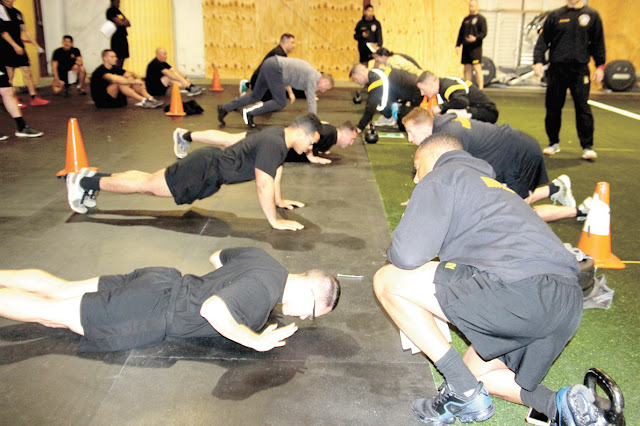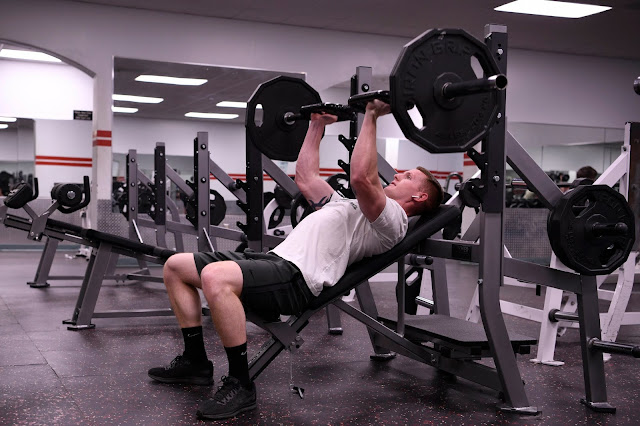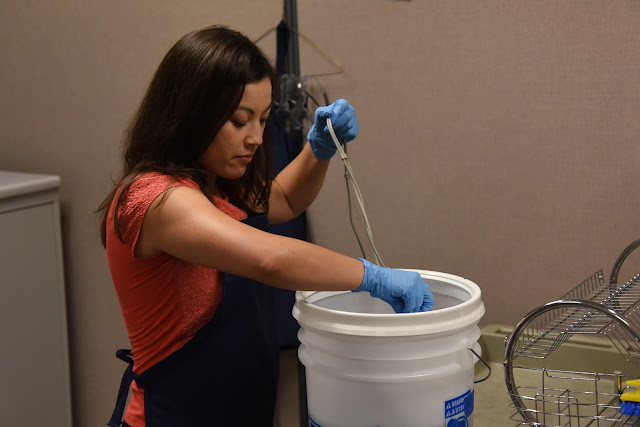BJACH hosts Army Combat Fitness Test, Pose Running Training
By Maj. MELISSA FOLSOM
Chief of physical therapy
FORT POLK, La. — Bayne-Jones Army Community Hospital hosted an Army Combat Fitness Test and Pose running method training course in early March for Fort Polk.
Col. Marla J. Ferguson, Medical Activity commander, identified a need to train Soldier instructors on the new ACFT, which is set to replace the Army Physical Fitness Test in October. Her focus on the prevention of injuries led her to designate the BJACH Department of Rehabilitation Team to take the lead in hosting the conference. A team of subject matter experts from the U.S. Army Physical Fitness School trained 30 Soldiers as level 2 instructors for the ACFT and as instructors on the Pose method of running, which incorporate poses into running to avoid wasting energy on inconsequential movements.
The ACFT improves Soldier readiness, transforms the culture of Army fitness, reduces preventable injuries and attrition, enhances mental toughness and stamina, and contributes to increased unit readiness. The ACFT is both gender and age neutral. If all events of the ACFT are completed, the prediction rate of success in combat conditions is 80 percent.
Six events make up the new ACFT: Deadlift, standing power throw, hand release push-up, the sprint/drag/carry, the leg tuck and two-mile run. The Army’s goal is full implementation of the ACFT by Oct. 1, 2020.
The events replicate movements Soldiers use in both combat and daily activities. The deadlift assesses the maximum amount of force that can be generated by a muscle or muscle group and is highly predictive of lower body and core muscular strength. This event applies to Soldier tasks such as lifting and transporting heavy loads, casualty evaluation and extraction and lifting heavy loads off the ground.
The standing power throw assesses the ability to generate maximal force in a short period of time and is highly predictive of upper and lower body explosive power. This event correlates to Soldier tasks such as lifting loads off the ground and onto a vehicle, jumping, leaping, climbing over obstacles, throwing a grenade and moving obstacles or vehicles.
The hand-release push-up is an indicator of the ability of muscle groups to perform repetitive work over a period of time to volitional fatigue and is highly predictive of upper body endurance and core strength. This event applies to Soldier tasks such as pushing loads up, onto, and over obstacles, employing progressive levels of force, carrying loads and dynamic balance while under load.
The sprint-drag and carry event tests a Soldier’s ability to sustain moderate to high intensity muscular work over a short duration and is predictive of aerobic power and endurance. This event applies to Soldier tasks such as moving quickly over uneven terrain under load, moving over, around, and through obstacles, casualty evacuation, extraction, moving supplies of ammunition, 3-5 second rushes and movement under fire.
The leg tuck tests the ability of muscles or muscle groups to repetitively perform work for an extended period of time to volitional fatigue. This test is highly predictive of upper body, grip strength, core strength and endurance. This event applies to Soldier tasks such as climbing up, onto, and over vehicles, traversing a rope ladder or bridge, loading vehicles and dynamic balance under load.
The 2-mile run tests the ability of large muscle groups at a level between moderate to high intensity for more than a few minutes and is a highly predictive test for aerobic endurance.
The Army’s proposed scoring method is based on the physical demand of a Soldier’s or unit’s military occupational specialty. Soldiers in the moderate physical demand unit/MOS will be required to meet Gold standards (minimum standards). Soldiers in a significant physical demand unit/MOS will be required to meet Silver standards. Soldiers in heavy physical demand unit/MOS will be required to meet black standards. The scoring system will maintain occupational fitness requirements for close combat battalion and below units regardless of age or gender.
The best way to prepare for the ACFT is to start now. The Army Physical Readiness Training (PRT) doctrine, FM 7-22 (October 2012), Army PRT application for smart devices (iOS and Android), and Combined Arms Lessons Learned (CALL) ACFT Guide can assist with the complete training program. A digital version of this CALL publication is available to view or download from the CALL website: http://call.army.mil.
In addition to the ACFT Training, Soldiers received training on the Pose technique of running from Lt. Col. Charles Blake, director of the U.S. Army Physical Fitness School. The Pose technique of running was developed by two-time Olympian Dr. Nicholas Romanov to diminish injuries and improve athletic performance.
Most people were not born with perfect running technique. Running is a skill that requires practice. The Pose method of running teaches running as a skill, based on scientific principles, concepts and foundational exercises.
The ACFT and Pose training included Soldiers from BJACH medical, dental and veterinary services, Joint Readiness Training Center Operations Group, 46th Engineer Battalion, 519th Military Police Battalion, 32nd Hospital Center and 3rd Brigade Combat Team, 10th Mountain Division. These Soldiers are level 2 ACFT certified and fully trained to instruct running technique classes.




Comments
Post a Comment